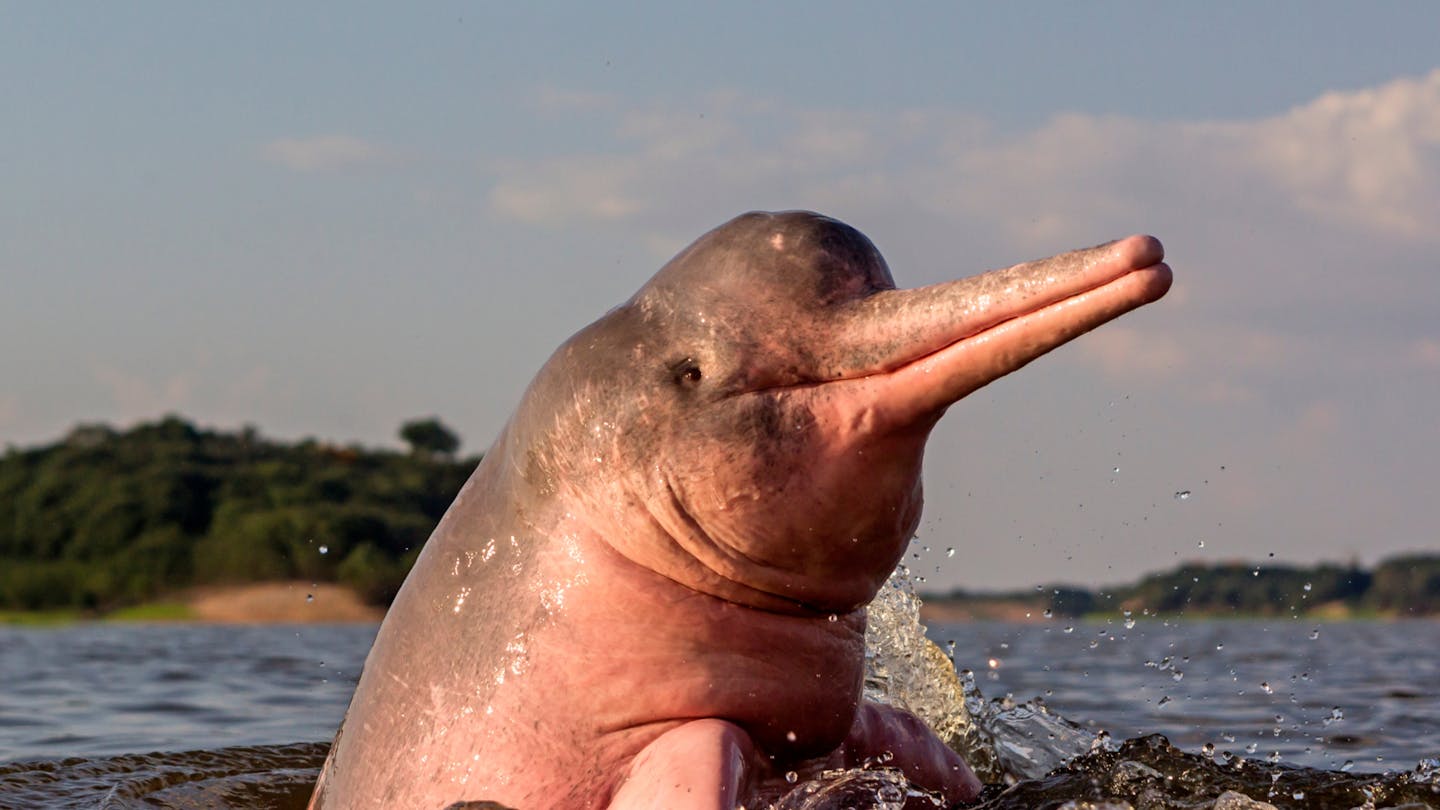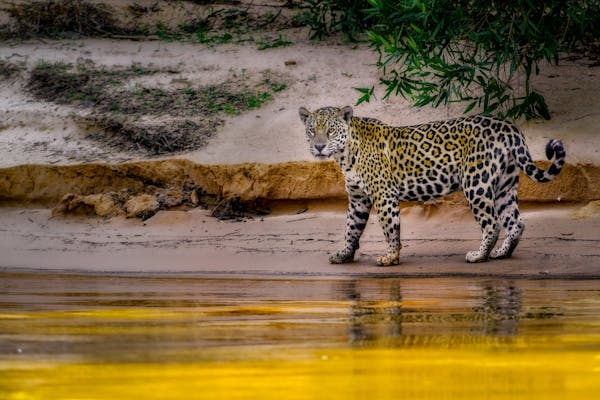Amazon river dolphins: The amazingly pink "guardians of the river"
One Earth’s “Species of the Week” series highlights an iconic species that represents the unique biogeography of each of the 185 bioregions of the Earth.
In the muddy waters of the Amazon River, a pink dorsal fin stands out as it weaves between submerged tree roots along the banks.
Botos, or Amazon river dolphins (Inia geoffrensis), are a distinct species in this jungle landscape. Their bright color is due to their capillaries being near the surface of their skin.

Amazon river dolphins (Inia geoffrensis) are the iconic species of the Western Amazonian Forests & Plains bioregion (NT18), located in the Amazonia subrealm of Southern America.
Unique behavior and distinctive features
In temperament, they are much like their saltwater cousins. They swim and play with the boats of local fishermen and researchers.
However, pink river dolphins are a bit more farcical looking with a lumpy head, beady eyes, and long snout that seems to be grinning. They are the largest of the five freshwater dolphin species, growing up to 2.5 meters (8.2 ft) long and weighing over 185 kilograms (408 lb).
Diet and echolocation: Adaptations to the Amazon's waters
Although they can see from their eyes, Amazon river dolphins primarily use echolocation to navigate the dark waters. The large melon on their head serves as a lens, helping them focus their low amplified sounds.
They can emit 30 to 80 clicks per second when locating prey. Their diet consists of at least 53 different fish species, and their narrow jaw contains 25 to 28 pairs of teeth, allowing them to crack the shells of turtles and freshwater crabs.
Whistling tones are also used to communicate with one another. Amazon river dolphins are commonly observed in pairs or groups of three, but pods as large as 37 have been spotted.

The long, thin snout, with 25 to 28 pairs of sharp teeth, helps the Amazon river dolphins crack the shells of river turtles. Credit: Michel VIARD from Getty Images via Canva Pro.
Social behavior and reproduction
Breeding and birthing occur between May and July, aligning with peak water levels. As floodwaters begin to decrease, the density of prey increases due to the loss of habitat. This allows easy nourishment for the high energy demands of giving birth and nursing.
Males begin the season by offering a gift to a female. Branches, leaves, or balls of hardened clay are presented, and if accepted, the male begins foreplay by nibbling the female's fins. The compilation is frequent, and multiple positions have been observed.
Gestation is estimated to be around eleven months and lactation is over a year as the mother cares for her calf. Born dark gray, juveniles become lighter with age and are thought to become independent within two to three years.
Indigenous cultural significance
In traditional Amazon River folklore, botos are known as shape-shifters called encantados. At night, they turn into beautiful men or women and seduce local villagers to the Underworld of Encante.
Legend forbids the killing, eating, or even gazing into the eyes of river dolphins for fear of bad luck. For abundant fishing or help locating the sacred Amazonian manatee, the myth states one must make peace with the “guardians of the river.”

The distinctive bright pink hue of the Amazon river dolphin stands out in the murky jungle waters of the Rio Negro. Image Credit: Michel VIARD from Getty Images via Canva Pro.
Threats to survival and conservation
While poaching poses a major threat, Amazon river dolphins are endangered due to loss of habitat and pollution, often found entangled in abandoned fishing lines. All caused by outside influence in the region.
The crucial role of Amazon river dolphins
Protecting Amazon river dolphins is not only about preserving a charismatic species but also about safeguarding the Amazon's biodiversity, which is critical for global climate stability. These dolphins play a vital role in their ecosystem, influencing the population dynamics of fish and other aquatic species through their predatory activities, which is essential for the overall health of the river system.
Conservation efforts that safeguard the Amazon river dolphin and their home are integral to maintaining the ecological harmony of our shared planet.
Support Nature Conservation

.%20Image%20credit%20%C2%A9%C2%A0Diego%20Grandi%20_%20Dreamstime.jpg?auto=compress%2Cformat&h=600&w=600)


